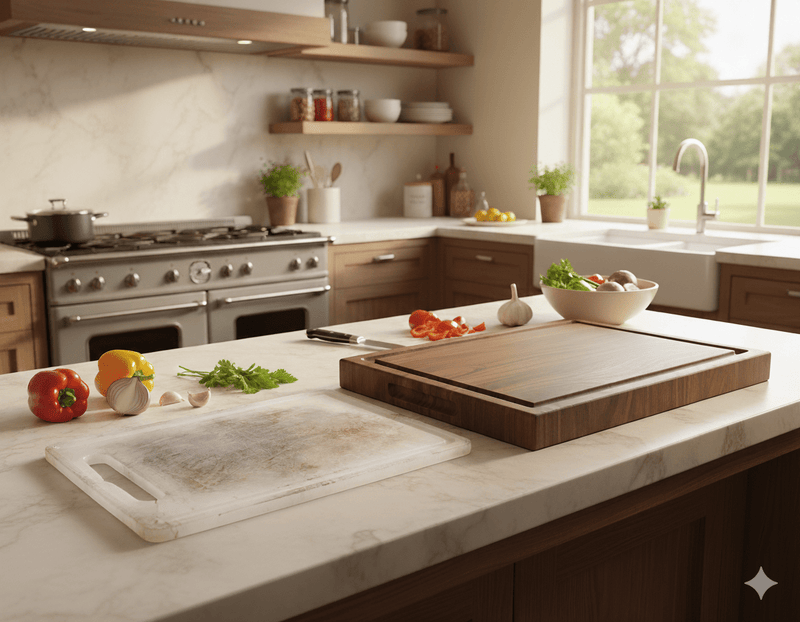Bamboo vs Plastic: The Better Chopping Board Choice
Share

The board you use every day does more than hold food. It shapes how safe your meals are, how sharp your knives stay, and how your kitchen feels. We’ve set bamboo beside plastic across four simple measures: health, hygiene, the environment, and fit in the kitchen.
Plastic Boards
Health: Microplastics in Your Food
Each cut releases tiny fragments. Over time, those pieces can end up on your plate. With microplastics showing up in more and more studies, it’s not something to ignore.
Hygiene: Bacteria in the Grooves
Plastic scars easily. Knife marks turn into crevices where bacteria linger, even after a good wash. That means a higher risk of cross-contamination.
Environment: Waste That Won’t Disappear
Plastic boards never truly break down. Once tossed away, they’ll sit in landfill for centuries.
Kitchen Fit: Tough on Knives
Despite feeling soft, plastic wears blades down quickly. Sharpen more, replace sooner.
Bamboo Boards
Health: Naturally Antibacterial
Bamboo carries natural compounds that help resist bacteria. With a quick wash and dry, it’s ready for the next meal.
Hygiene: Strong and Self-Healing
Cuts don’t bite as deep. Bamboo has a way of closing over small marks, keeping the surface smoother and easier to keep clean.
Environment: Grows Back Fast
Bamboo is one of the fastest-renewing plants on earth. It’s biodegradable, renewable, and leaves a lighter footprint than plastic.
Kitchen Fit: Beautiful, Everyday
Warm grain, caramel tone, and solid weight. A board you’ll want to leave out on the bench, even between uses.
Conclusion: Bamboo Belongs
Plastic boards scratch, shed, and stay in landfill. Bamboo lasts, heals, and feels right in the hand. It’s better for your food, your knives, and your kitchen.
Explore our range → here
